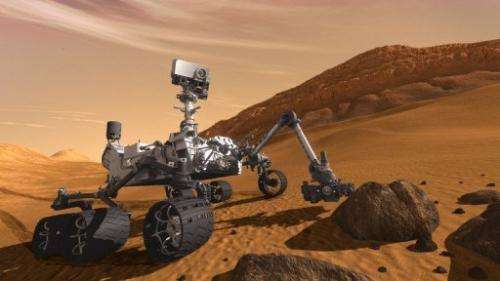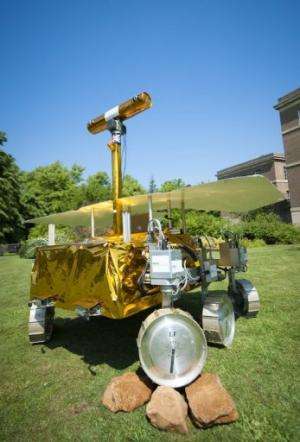NASA seeks new ideas for Mars missions

The US space agency said Friday it is seeking fresh ideas for robotic missions to explore Mars, after budget cuts nixed a planned partnership with the European space agency.
"NASA is reformulating the Mars Exploration Program to be responsive to high-priority science goals and the president's challenge of sending humans to Mars in the 2030s," the agency said.
A Mars Program Planning Group has started to sift through potential options for future missions, which could involve sending an orbiter around the red planet or a robotic rover to land by 2018, two years later than planned as part of a now defunct European partnership.
NASA issued an open appeal to scientists worldwide to "submit ideas and abstracts online as part of NASA's effort to seek out the best and the brightest ideas from researchers and engineers in planetary science."
Those picked will be presented in June at a workshop in Houston, Texas by the Lunar and Planetary Institute, NASA said.
"The workshop will provide an open forum for presentation, discussion and consideration of concepts, options, capabilities and innovations to advance Mars exploration," the NASA statement said.
"These ideas will inform a strategy for exploration within available resources, beginning as early as 2018 and stretching into the next decade and beyond."

More details are available at www.lpi.usra.edu/meetings/marsconcepts2012.
The United States had planned to partner with the European Space Agency on a project called ExoMars that would have sent an orbiter to Mars in 2016 and two rovers to land on the red planet in 2018.
According to the ExoMars deal made in 2009, NASA would have contributed $1.4 billion to the project and ESA would have chipped in $1.2 billion.
But those plans were axed in February when a proposed fiscal 2013 budget released by President Barack Obama called for a $226 million reduction, or a near 39 percent cut in the US space agency's Mars exploration program from $587 million to $361 million.
John Grunsfeld, associate administrator of the NASA Science Mission Directorate, said active European cooperation could still be expected on future Mars projects.
"I think it is very realistic," Grunsfeld said during a conference call with reporters.
"We are continuing to work with the Europeans. More than three quarters of our current missions have significant international partnerships," he said, citing the International Space Station as an example.
As to the end of the ExoMars project, Grunsfeld said: "we are having a tough time with collaborating in the near term with the Mars missions but we are working our way through that and our international partners understand that."
However, future Mars exploration for NASA will not involve the ExoMars plans, except for some US instruments that are still planned to be included on the 2016 orbiter.
"Our understanding is... that the Europeans have been in very productive negotiations with the Russian space agency and they are working out the details but the US participation is pretty much -- we are out of that and I don't think it is recoverable," Grunsfeld said.
NASA's Curiosity rover, formally known as the Mars Science Laboratory but nicknamed a "dream machine" by NASA scientists, blasted off from Florida in November and is expected to land on the red planet in early August.
The most advanced machine ever built with the aim of roaming the surface of Earth's nearest neighbor cost $2.5 billion to construct and launch, carries its own rock-analyzing lab and aims to hunt for signs that life once existed there.
(c) 2012 AFP




















